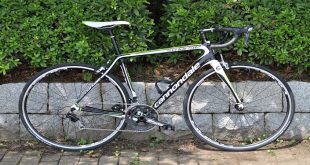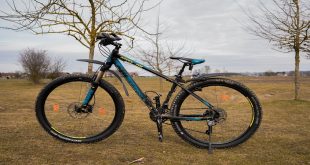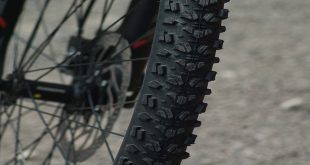Yes, the handlebars on a mountain bike can be adjusted to suit the rider’s preference and comfort level. The handlebar adjustment allows for a customized fit, enhancing control and reducing strain during rides.
Proper handlebar positioning ensures optimal body posture, making steering and maneuvering more efficient. By adjusting the handlebars, riders can improve their riding experience and prevent discomfort or injury. Whether it’s adjusting the height, angle, or width, finding the right handlebar position is essential for a comfortable and safe mountain biking experience.
So, let’s explore how handlebar adjustment can be done and the benefits it brings to mountain bikers.
Understanding The Importance Of Handlebar Adjustment
Why Handlebar Adjustment Is Crucial For A Comfortable Ride
When it comes to mountain biking, every detail matters – including handlebar adjustment. Properly adjusting the handlebars is crucial for ensuring a comfortable ride. This adjustment allows you to find the optimal position that suits your body type, riding style, and personal preferences. Whether you are a seasoned rider or a beginner, a comfortable ride is essential for maximum enjoyment and endurance on the trails.
The Impact Of Proper Handlebar Positioning On Bike Handling And Control
The proper positioning of your handlebars also has a significant impact on bike handling and control. When your handlebars are properly adjusted, you can achieve better stability and control while riding. This is especially important when maneuvering through technical terrains and tackling obstacles on the trail. By adjusting the handlebars to the correct height and angle, you can optimize your bike’s handling characteristics, leading to improved agility and responsiveness.
Furthermore, the correct handlebar positioning allows you to maintain a natural and relaxed riding posture. This helps to reduce strain on your upper body and wrists, preventing fatigue and potential injuries. A comfortable riding position allows you to stay focused and in control, enhancing your overall biking experience. To adjust your mountain bike handlebars, follow these simple steps:
- Start by loosening the stem bolts using an Allen wrench.
- Gently reposition the handlebars either higher or lower depending on your preference.
- Ensure the bars are aligned equal distances from the top of the stem and tighten the stem bolts.
- Test out the new handlebar position and make any necessary additional adjustments until you find the perfect fit.
Remember to take your time and experiment with different positions until you find the one that feels most comfortable for you. It’s worth noting that handlebar adjustments are not limited to height alone. You can also consider adjusting the handlebars’ angle or rotating them slightly to find the best ergonomic position for your wrist alignment.
In conclusion, handlebar adjustment is a crucial aspect of mountain biking. By properly adjusting your handlebars, you can achieve a more comfortable ride, better bike handling, and improved control. Take the time to experiment with different positions until you find the sweet spot that enhances your biking experience on the trails.
Factors To Consider Before Adjusting Handlebars
Before making any adjustments to the handlebars of your mountain bike, it’s essential to consider several factors. These factors will help you make informed decisions that ensure maximum comfort, control, and efficiency while riding. Evaluating your riding style and preferences, taking into account your body positioning and ergonomics, and considering the type of mountain biking you engage in are crucial aspects to keep in mind. Let’s delve into each factor to help you make the right adjustments for a more enjoyable biking experience.
Evaluating Your Riding Style And Preferences
Before adjusting the handlebars, it’s crucial to evaluate your riding style and preferences to determine the most suitable handlebar position. Different styles of mountain biking, such as cross-country, trail riding, or downhill, require varying levels of maneuverability and control.
For instance, if you enjoy aggressive downhill riding, a lower handlebar position that allows for more weight on the front wheel might be preferable. On the other hand, if you prefer a more upright and comfortable riding position for longer rides, you may want to consider raising the handlebars slightly. By understanding your riding style and preferences, you’ll be able to make adjustments that enhance your overall biking experience.
Taking Into Account Your Body Positioning And Ergonomics
Your body positioning and ergonomics play a significant role in determining how comfortable and efficient you are while riding your mountain bike. Adjusting the handlebars to suit your body’s natural posture is essential to avoid strain and discomfort during rides.
You should ensure that the handlebars promote a neutral wrist position and that your arms are slightly bent when gripping them. Additionally, considering your shoulder and back alignment is crucial. Adjusting the handlebar height and angle can help align your body properly, preventing unnecessary stress on your joints and muscles and minimizing the risk of injury.
Considering The Type Of Mountain Biking You Engage In
The type of mountain biking you engage in is another important factor to consider before adjusting your handlebars. Different riding disciplines may require specific handlebar setups to optimize performance and control.
For example, if you’re involved in cross-country racing where speed and efficiency are crucial, handlebars with a narrower width may be more suitable. On the other hand, if you frequently tackle technical terrain and require more stability, wider handlebars can provide improved control.
By considering the type of mountain biking you engage in, you can make adjustments that align with the demands of your chosen riding style, enhancing your overall riding experience.
Step-by-step Guide To Adjusting Handlebars On A Mountain Bike
Determining The Ideal Handlebar Height And Angle For Your Needs
When it comes to mountain biking, one of the key aspects that can greatly impact your comfort and performance is the handlebar position. Adjusting the handlebars on your mountain bike to the ideal height and angle can make a significant difference in terms of control, weight distribution, and overall riding experience. In this step-by-step guide, we will walk you through the process of adjusting the handlebars on your mountain bike, ensuring you can ride with maximum comfort and efficiency.
Adjusting The Stem Length And Position To Optimize Comfort
The first step in adjusting the handlebars of your mountain bike is to consider the stem length and position. This component connects the handlebars to the steerer tube of the fork and can greatly affect your riding comfort. The key is to find a stem length and position that allows for natural positioning of your upper body and keeps your hands at a comfortable distance from the handlebars.
Start by loosening the bolts that secure the stem to the steerer tube. Once loose, you can adjust the stem horizontally or vertically to achieve your desired position. It’s important not to over-tighten the bolts until you have found the right position, as this will allow for further adjustments if needed.
Making Use Of Spacers To Fine-tune The Handlebar Height
Once you have determined the ideal stem length and position, the next step is to fine-tune the handlebar height using spacers. Spacers are small cylindrical washers that can be placed above or below the stem to raise or lower the handlebars, respectively.
To adjust the handlebar height, simply remove the bolts that secure the stem to the steerer tube, and add or remove spacers as needed. Make sure to evenly distribute the spacers for a balanced height adjustment. Once the spacers are correctly positioned, tighten the bolts gradually and evenly to secure the stem and handlebars in place.
Determining the ideal handlebar height and angle for your needs:
- Consider your riding style and preferences to determine the handlebar height and angle that best suits you.
- Start with a neutral position by aligning the handlebars with the front wheel and checking for an even gap on both sides.
- For a more aggressive riding stance, you may prefer a lower handlebar position, which puts more weight on the front wheel.
- For a more upright and relaxed riding position, a higher handlebar position is recommended, distributing weight more evenly.
Adjusting the stem length and position to optimize comfort:
- Loosen the bolts securing the stem to the steerer tube using an Allen wrench.
- Experiment with different stem lengths and positions to find the most comfortable and natural position for your upper body.
- Tighten the bolts gradually and evenly, ensuring the stem is securely attached but still allows for adjustments if necessary.
Making use of spacers to fine-tune the handlebar height:
- Loosen the bolts holding the stem to the steerer tube to allow for adjustments.
- Add or remove spacers above or below the stem to achieve your desired handlebar height.
- Distribute the spacers evenly for a balanced height adjustment.
- Tighten the bolts gradually and evenly to secure the stem and handlebars in place.
Tools And Techniques For Handlebar Adjustment
Adjusting the handlebars on a mountain bike is essential to ensure a comfortable and efficient riding position. Fortunately, the process can be easily done with the right tools and techniques. In this article, we will explore different types of handlebar stems and their role in adjustment, discuss the appropriate tools needed to loosen and tighten handlebar components, and provide a systematic approach for safe and effective adjustments.
Exploring Different Types Of Handlebar Stems And Their Role In Adjustment
Handlebar stems play a crucial role in adjusting the height and angle of your mountain bike’s handlebars. There are several types of handlebar stems to consider, each with its own unique characteristics.
The most common types of handlebar stems include:
| Type | Description |
|---|---|
| Quill Stems | Affixed to the steering tube with a wedge bolt, allowing for easy height adjustment. |
| Threadless Stems | Secured to the steering tube using a stack of spacers and stem cap, providing a wide range of adjustability. |
| Adjustable Stems | Equipped with a hinge mechanism that allows for both height and angle adjustment, providing maximum customization. |
Understanding the different types of handlebar stems and their role in adjustment is essential when it comes to finding the perfect fit for your mountain bike.
Using Appropriate Tools To Loosen And Tighten Handlebar Components
To adjust your mountain bike’s handlebars, you will need the appropriate tools to effectively loosen and tighten the necessary components. These tools include:
- Hex Keys: Hex keys, also known as Allen keys, are used to remove and tighten bolts commonly found on handlebar stems, stem caps, and bar ends.
- Torque Wrench: A torque wrench is essential for precise tightening of bolts to avoid over- or under-tightening, ensuring optimal safety and performance.
- Wrench or Adjustable Wrench: A wrench is necessary for certain handlebar stem types that require a standard wrench size to loosen and tighten the stem bolt.
By having the appropriate tools at your disposal, you can confidently make the necessary adjustments to your mountain bike’s handlebars.
Following A Systematic Approach To Ensure Safe And Effective Adjustments
Adjusting your mountain bike’s handlebars should be approached systematically to guarantee both safety and effectiveness.
Follow these steps to make the necessary adjustments:
- Loosen Stem Bolts: Using the appropriate tool, loosen the stem bolts that attach the handlebar stem to the steering tube.
- Adjust Handlebar Position: Depending on your desired height and angle, adjust the handlebar stem accordingly. Make sure it is securely tightened to avoid any movement during rides.
- Check Alignment: Ensure that the handlebars are aligned with the front wheel to prevent any steering issues while riding.
- Test and Fine-Tune: Take your mountain bike for a short test ride to assess the handlebar position. If further adjustments are needed, repeat the previous steps until you achieve the desired fit.
By following this systematic approach, you can confidently make handlebar adjustments that will enhance your riding experience on your mountain bike.
Troubleshooting Common Handlebar Adjustment Issues
Can You Adjust The Handlebars On A Mountain Bike? Absolutely! Properly adjusting your handlebars is crucial for a comfortable and efficient ride. However, like any mechanical part, handlebars can experience a few common adjustment issues. In this section, we’ll address two of the most common problems you may encounter – handlebar slippage and handlebar alignment – and provide you with practical solutions to overcome them.
Addressing Handlebar Slippage And Ensuring A Secure Fit
Handlebar slippage can be frustrating and even dangerous if not addressed promptly. When your handlebars continuously slide down or pivot from side to side while riding, it compromises your control and stability. Luckily, there are a few steps you can take to fix this problem:
- Start by ensuring that your handlebar is clean and free from any debris or residue that may prevent a secure connection with the stem.
- Use an appropriate Allen wrench to tighten the bolts on the faceplate of the stem. Gradually and evenly tighten the bolts, alternating between them until they are snug. Be cautious not to overtighten, as this can damage your bike’s components.
- If you have a carbon handlebar or stem, make sure to follow the manufacturer’s torque specifications, as overtightening can lead to damage.
- Consider using a non-slip handlebar grip tape or adhesive to provide extra grip between the handlebar and stem, preventing slippage.
- Regularly inspect your handlebar and stem for signs of wear or damage. If you notice any cracks, dents, or other compromising issues, it’s best to replace the affected parts immediately.
Dealing With Handlebar Alignment Problems And Potential Solutions
Handlebar alignment plays a crucial role in maintaining a balanced and stable riding experience. When your handlebars are misaligned, steering responsiveness can be compromised, affecting both your control and comfort. Here are a few steps to troubleshoot handlebar alignment problems:
- Start by loosening the bolts on the stem faceplate, allowing your handlebars to move freely.
- Align the handlebars with your front wheel by carefully straightening them using visual cues. Ensure they are parallel to your front tire or positioned to your desired angle.
- Once the handlebars are aligned, retighten the bolts on the stem faceplate using the appropriate Allen wrench. Be sure to tighten them evenly and gradually to maintain a secure fit.
- If you are uncertain about achieving proper handlebar alignment on your own, consider seeking guidance from a professional bike mechanic. They have the expertise and tools needed to ensure precise alignment and address any potential underlying issues.
Understanding When To Seek Professional Assistance For Complex Adjustments
While many handlebar adjustment issues can be resolved with basic troubleshooting, some cases may require professional assistance. Complex adjustments may involve issues like stem replacement, upgrading handlebars, or adjusting specialized components. If you encounter any of the following situations, it is advisable to consult a bike mechanic:
- Experiencing persistent handlebar slippage or misalignment despite following troubleshooting steps.
- Desiring to upgrade your handlebars or stem to accommodate specific riding preferences or ergonomics.
- Not feeling confident in performing intricate adjustments or lacking the necessary tools.
- Noticing any signs of damage, excessive wear, or irregularities in your handlebars or stem that require professional evaluation.
By knowing when to seek professional assistance, you can ensure that your mountain bike’s handlebars are adjusted properly and provide you with an optimized riding experience.
Frequently Asked Questions Of Can You Adjust The Handlebars On A Mountain Bike?
Can You Adjust The Handlebars On A Mountain Bike?
Yes, the handlebars on a mountain bike can be adjusted to suit your riding style and comfort. Most mountain bikes have adjustable handlebars that allow you to raise or lower them, as well as adjust the angle to find the perfect position for you.
Just make sure to use the appropriate tools and follow the manufacturer’s instructions.
How Do You Adjust The Handlebars On A Mountain Bike?
To adjust the handlebars on a mountain bike, start by loosening the stem bolts with the appropriate Allen wrench. Once loosened, you can then adjust the height and angle of the handlebars to your desired position. Finally, tighten the stem bolts securely to ensure the handlebars remain in place during rides.
Can You Adjust The Handlebars On A Mountain Bike Without Tools?
In most cases, it is not possible to adjust the handlebars on a mountain bike without tools. You will typically need an Allen wrench or a similar tool to loosen and tighten the stem bolts that hold the handlebars in place.
It is important to use the correct tool to avoid damaging the components.
What Is The Best Handlebar Position For A Mountain Bike?
The best handlebar position for a mountain bike is a matter of personal preference and riding style. Some riders prefer a lower, more aggressive position for better aerodynamics and control, while others prefer a higher position for comfort and better visibility.
Experiment with different positions until you find the one that suits you best.
Conclusion
Adjusting the handlebars on a mountain bike is essential for an optimal riding experience. It allows you to find the most comfortable and efficient riding position for better control and maneuverability. By following the steps outlined in this blog post, you can easily adjust the handlebars to fit your personal preferences and riding style.
Remember, proper handlebar adjustment is crucial for reducing strain and enhancing overall biking performance. So don’t hesitate to make the necessary adjustments and enjoy a smoother and more enjoyable ride.
 AmFana Pedal through life's journey: Unchain the Adventure!
AmFana Pedal through life's journey: Unchain the Adventure!





